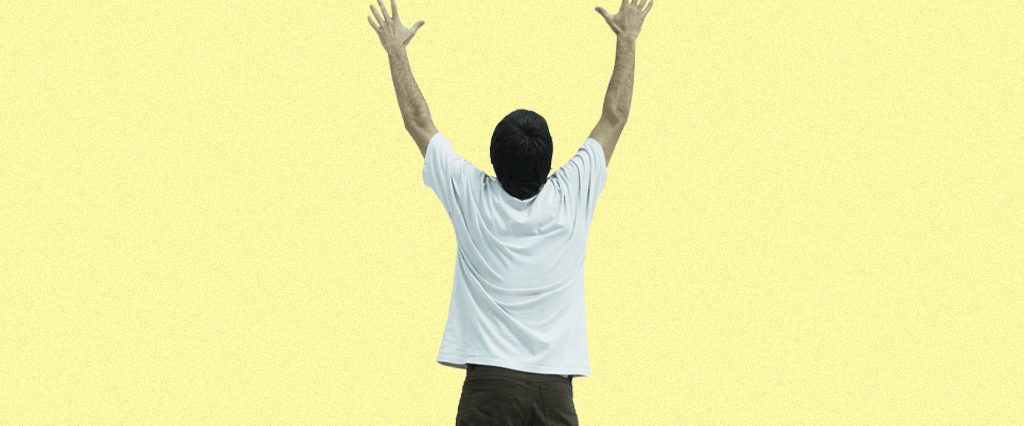My cousin Josh was quite an accomplished basketball player; his family went so far as to move him from England all the way to the Metro Detroit area so that he could play on a prominent high school team that had produced recognizable NBA talent. “I’m going to have to get a lot taller if I want to have any chance of playing in the NBA,” Josh often told me. “Fortunately, the doctor says I haven’t unlocked all of the growth plates in my back yet, so there’s a chance I can get up to 6-foot-6!”
Josh did everything he could to unlock the mysterious “growth plates” that were allegedly lurking within his bones and waiting to be liberated by whatever time-sensitive process was responsible for their release. To his credit, Jake took it upon himself to stretch regularly, and even suspended himself from a pull-up bar that capped the doorway to his room for as long as he could bear to leave himself dangling.
Amazingly, Josh did manage to surge to a height of 6-foot-4, which shocked me because his father stood about 6-foot flat, and I wasn’t aware of anyone on his mother’s side who had ever achieved such a lofty height before.
So what was the deal? Had all of that stretching unlocked a miracle? Was it truly possible that stretching had made my cousin taller?
Does stretching actually make you taller?
The notion that you can functionally stretch your own limbs, eliciting growth from them that would have gone otherwise unrealized, and cementing that growth as permanent is an idea that’s persisted for centuries. Nearly 100 years ago, a nationally syndicated column by Antoinette Donnelly entitled “Stretching Can Make You Seem Taller” began making the rounds in March 1930.
“Stretch before you get out of bed in the morning,” Donnelly recommended. “Stretch the legs, the arms, the torso. Stretch during the day — arms high over head. Walk around a few turns on the toes, stretching up full height and taller. Put a marker on the wall high up and try to reach it with your hands. It will make you conscious of the need of exercise, of more air in your lungs and of the height you might be if you pulled yourself upright.”
Donnelly qualified her assertion by saying that she wasn’t convinced that the stretching added legitimate inches to a person’s frame aside from helping the lengthened muscles to provide the impression of height. However, she did say “it might be quite possible” to permanently influence the growth of bones through stretching that’s performed before “the bony framework” has been set. In other words, she instilled hope in young readers that they could indeed stretch their way to permanent tallness.
Meanwhile, by the 1960s, science had essentially debunked the notion that physical interventions could prompt growth spurts, as if bones could gradually respond to external pressures by lengthening themselves. Beauty columnist and author Josephine Lowman advised her readers to engage in their own battery of stretches for the sake of maximizing their height potential through postural improvements, but conceded that there was no special diet or exercise that would permanently extend the limbs.
As the 1980s loomed, New York Times writer Claudia Driefus took on the stretch-your-way-to-height belief in her “Body Myths” column from September 1979, stating the following: “Stretching will never permanently increase height. Tallness is determined by heredity and nutrition. However, if you do stretching exercises, your body will be a half inch taller after the workout than it is at bedtime. The change is not permanent.”
Dreifus closed by attributing the compression of the spine throughout the day to the pull of gravitational forces, and reaffirmed that the decompression effect provided by stretching is only temporary.
So what does science say today?
Specifically, that 60 percent to 80 percent of human height is determined by genetics, and that the remaining 20 percent to 40 percent is influenced by nutrition. Therefore, to extract the furthest expanse out of a child’s height before puberty concludes, we’re advised to feed them the healthiest, most balanced range of nutrients.
Now, with respect to the growth-plates comment my cousin alluded to, these plates are the softer tissues at the outer reaches of growing skeletons. While doctors can evaluate X-rays to establish whether or not growth plates have closed and the window of growth opportunity is shutting, there’s no safe way to manipulate them to grow continually. In fact, because these plates are the final areas of the bones to harden, it makes them highly susceptible to injury, so any form of physical tampering would be highly inadvisable.
If maximizing your height is important to you, the half inch that you can recover through an intense stretching regimen might help to put you over the top, so to speak. Just know that sooner or later, you’ll definitely be coming back down to earth.

